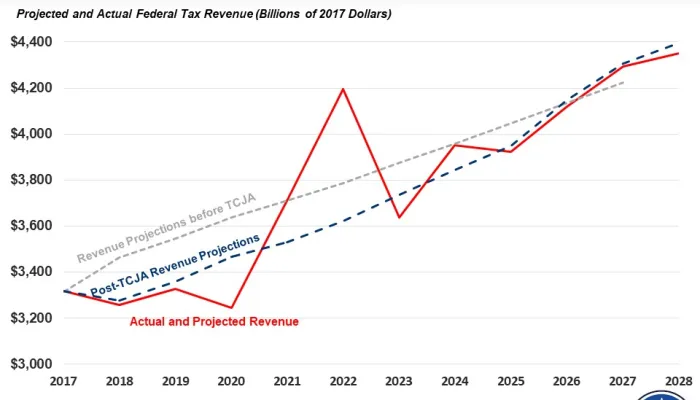The 1986 Tax Reform Act Turns 27
On this day 27 years ago, President Ronald Reagan signed into the law the Tax Reform Act of 1986, which stands as the last major overhaul of the US tax system. The law serves as the ultimate example in this country of tax base-broadening and tax rate-lowering reform and is often cited as the inspiration for many tax reform plans today. The Act consolidated individual income tax brackets from 15 to 2, reducing the top individual rate from 50 to 28 percent and the top corporate rate from 46 to 34 percent. To help low earners, the standard deduction and earned income tax credit were increased and indexed for inflation.
In addition, a number of tax expenditures and other tax provisions were reduced or eliminated, including the deductibility of consumer interest (other than mortgage interest), the investment tax credit, the meals and entertainment deduction, and the state and local sales tax deduction. There were also many revisions to depreciation schedules, accounting methods, and other rules. Overall, the Act was revenue-neutral, with the individual tax system receiving a $120 billion tax cut over five years and the corporate side getting a $120 billion tax increase over the same period. According to the Joint Committee on Taxation, the Act in total was slightly progressive in terms of the distributional effect.
Last year, we pointed to a Third Way report showing how the tax code had changed since 1986. Some of the tax breaks that were eliminated have been re-instated in some form or another, while many other new tax expenditures have been enacted. In addition, while the American Taxpayer Relief Act resolved some of the temporary nature of the tax code, there are still a number of often narrowly-targeted "tax extenders" which are renewed every year or two en masse.
This time of year usually renews calls for a comprehensive overhaul of the tax code. This year was no different, as Dave Cote and Keith Stephens in the Arizona Republic called for reform to simplify the tax code, reduce economic distortions and lower rates. About the problems of our current code, the two wrote:
Our current tax code is needlessly complicated and globally uncompetitive. Our complex tax system has real consequences that cost real jobs and slow productivity. With so many arcane provisions in the code, companies often face perverse incentives to focus on reducing their tax liability to save money rather than engaging in some economy-expanding endeavor.
The 1986 Act can provide an example for lawmakers today, although given our debt situation we should be looking to make reform revenue-positive. They should also take a lesson in how long it took for the Act to come together. President Reagan originally called for his Administration to develop a tax reform plan in his 1984 State of the Union Address. The first iteration of the plan was released shortly after the 1984 election, and another version came out in May 1985. It took another year and a half before Congress was able to get a bill through as they worked out many policy aspects and political disagreements. Still, the effort showed that with enough commitment on the part of major stakeholders, a major reform plan can become reality.
While the tax-writing committees have been working diligently on compiling options and drafts on different parts of the tax code, it will take a while to formulate a viable bill. However, as our Tax Break-Down series and our corporate tax calculator show, there are a lot of options already out there to reform the tax code and boost economic growth. Even if tax reform will be difficult, its potential for economic growth and deficit reduction is well worth it.


